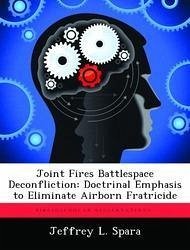When air and ground forces operate in close proximity unintended side effects surface in the form of fratricide. Despite precision capabilities, close air support operations run the greatest risk to friendly ground forces. In the same vein, ground artillery technological advances in range and altitude conflict with aircraft orbiting above the battlespace even when far from the front lines. Not unexpectedly, air-to-ground fratricide incidents greatly outnumber ground-to-air incidents by the sheer nature of these operations. Thus, joint and service doctrines devote most of their literature accordingly. However, doctrine regarding deconfliction of aircraft from ground artillery is less than adequate requiring modification and emphasis. This paper addresses the changing battlespace concept. The primary focus of the discussion concentrates on fratricide during close air support and kills box operations viewed from both an air-to-ground and ground-to-air perspective. Contained within are historical examples of United States fratricide incidents during major conflicts from World War II to Operation Iraqi Freedom. Regardless of history, an ineffaceable variable is the continuous increase of airborne platforms by all services. Coupled with recent trends of decreasing battlespace footprints, limited enemy air threats, and short duration conflicts there is need to emphasize clearer and more focused doctrine regarding joint fires deconfliction. Almost all of the doctrine currently revolves around air-to-ground fratricide but it is imperative more focused doctrine revolve around the ground-to-air fratricide and ways to mitigate impacts.
Hinweis: Dieser Artikel kann nur an eine deutsche Lieferadresse ausgeliefert werden.
Hinweis: Dieser Artikel kann nur an eine deutsche Lieferadresse ausgeliefert werden.








